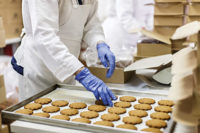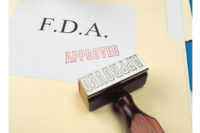The executive went on to say, “We have always done it that way, and it hasn’t been a problem.” The firm had been living on luck and didn’t keep up with food-safety changes. The result had a devastating financial impact on the company and the future of its long-time employees.
Times have changed and so have many things involving food production and food safety. Too often, management doesn’t invest in the timely maintenance of the company’s food production facility or equipment. Roof leaks and food equipment that cannot be adequately cleaned due to poor design or poor maintenance all lead to product contamination. The microbial harborages created by these conditions allowed for rapid multiplication of pathogenic microbes that hitchhike to their next location via food going through the equipment and end up making someone sick.
In recent years, there have been too many days when such negatives lined up and resulted in a food-safety disaster. Too often, epidemiologists identify these contamination problems as going beyond a one-time event and resulting in products manufactured over several months that must be recalled.
In 2012, there were nearly seven food products recalled per day in the U.S. In fact, there was a record number of food recalls last year, with more than half of them due to microbiological contamination. Sixty-nine food companies had multiple recalls, with some having as many as six different recalls.
Since 2008, the number of food recalls is up more than fivefold. We need to look at food safety differently in 2013.
Keys to food-safety success
Successful food companies have programs in place to look at continual improvements of not only their facilities and production equipment, but also at the science of food safety. Such companies look at ways to invest capital in equipment and facilities that pay dividends in the operating cost efficiencies of cleaning and operating food-processing equipment and in food-safety technologies to prevent problems.
Reviewing food recalls in recent years, I found several major contributing factors to these recalls. The physical conditions of the manufacturers’ facilities allowed pathogens to take up residence and lead to product contamination. Equipment lacked process validation or verification as to food-safety measures. Equipment couldn’t be taken apart for thorough cleaning, sanitizing and removal of food residue, microbes and allergen residues, resulting in contaminated products and human illnesses. Surfaces with which food routinely came into contact were damaged due to use, poor repairs or improper food-grade welds and frequently cited as a source of contamination. All food-contact surfaces must be accessible for proper cleaning and sanitizing.
Facility maintenance too often has contributed to environmental microbial problems within a food plant, which also results in recalls. Floor surface problems and water provide reservoirs for pathogens to become a risk for the post-processing contamination of products. Often, employee traffic patterns are overlooked, and employees unknowingly move contamination for one plant location to another, as microbes hitchhike on shoes, uniforms, hands, gloves, tools, water, product and other items. Many environmental contamination problems, therefore, can be solved by modifying employee traffic patterns. Facility construction and maintenance deviations also must be addressed to remove harborages.
The Food Safety Modernization Act (FSMA) says food companies must understand the science of food safety for each product they produce. The act requires companies to be able to validate not only that their processes are safe, but also the effectiveness of the ability to clean and sanitize the production equipment. They must verify that these procedures have been followed as designed. No longer can we base food-safety efforts on luck, if we plan to survive going forward.
Author Gale Prince is founder and president of SAGE Food Safety Consultants, LLC, Cincinnati, which offers guidance and solutions to issues such as crisis management, food safety, regulatory compliance and quality assurance.





